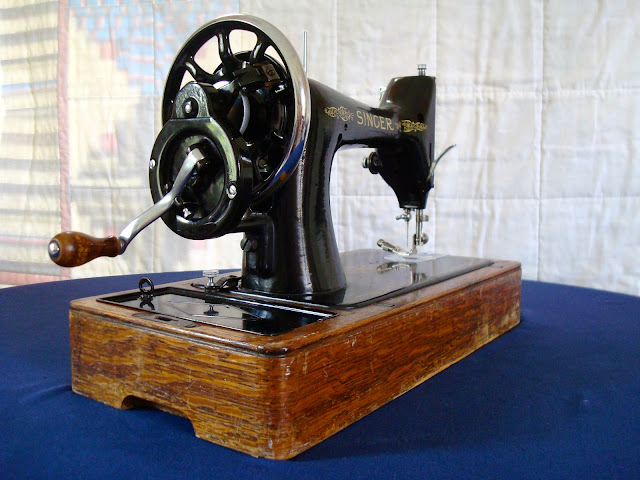Another new arrival at Oil and Thread. Oops. I'm sorry. I didn't mean to do it. I couldn't help it. She was a local beauty, the price was right, I was weak. Anyone will tell you these are excuses and not reasons and they'd probably be right but who could have resisted this little honey? A 1935 Singer 99k, the bright work is unmarked and the black lacquer still has a deep gloss.
The following were included with the machine
- rigid straight stitch foot
- adjustable hemmer foot
- two class 66 bobbins
- a couple of needles
- Singer screw driver
- correct instruction book
The key and the extension table are missing but as we all know a narrow screwdriver will open and lock the case with impunity and I can live without an extension table until fate is kind enough to send one my way.
The vendor told me that he had bought this machine from a sewing machine dealer, for his wife, in 1979. I think she must have used it quite a bit because the bobbins were each wound with the statutory five different colours and there was a LOT of fluff behind the faceplate, around the hook and in the base. I resorted to a vacuum cleaner and an old toothbrush.
With the fluff removed, oil in all of the usual places got shot of the slight squeak from under the machine bed. The slide plate had been pulled off but was easy to replace by following the directions in the instruction leaflet. The machine produced excellent stitches with balanced tension right from the word go. It must have been well set up back in '79 because there was very little for me to do except get down to some sewing!
 |
| Not just a pretty face(plate). The eagle eyed will notice that a binding foot has been fitted. What can Mr G be up to? |
 |
| The bentwood case is in more than fair condition but missing a key. I will wax polish it someday I promise. |
In closing today I am going to offer some buying advice. This machine was offered for sale at auction at a tiny starting price. I have seen similar on offer for ten and even twenty times what I paid for it. My point? Set a limit and then be patient. There are a LOT of little black Singers out there in the world. If you sit tight the right one will come and find you (almost).





